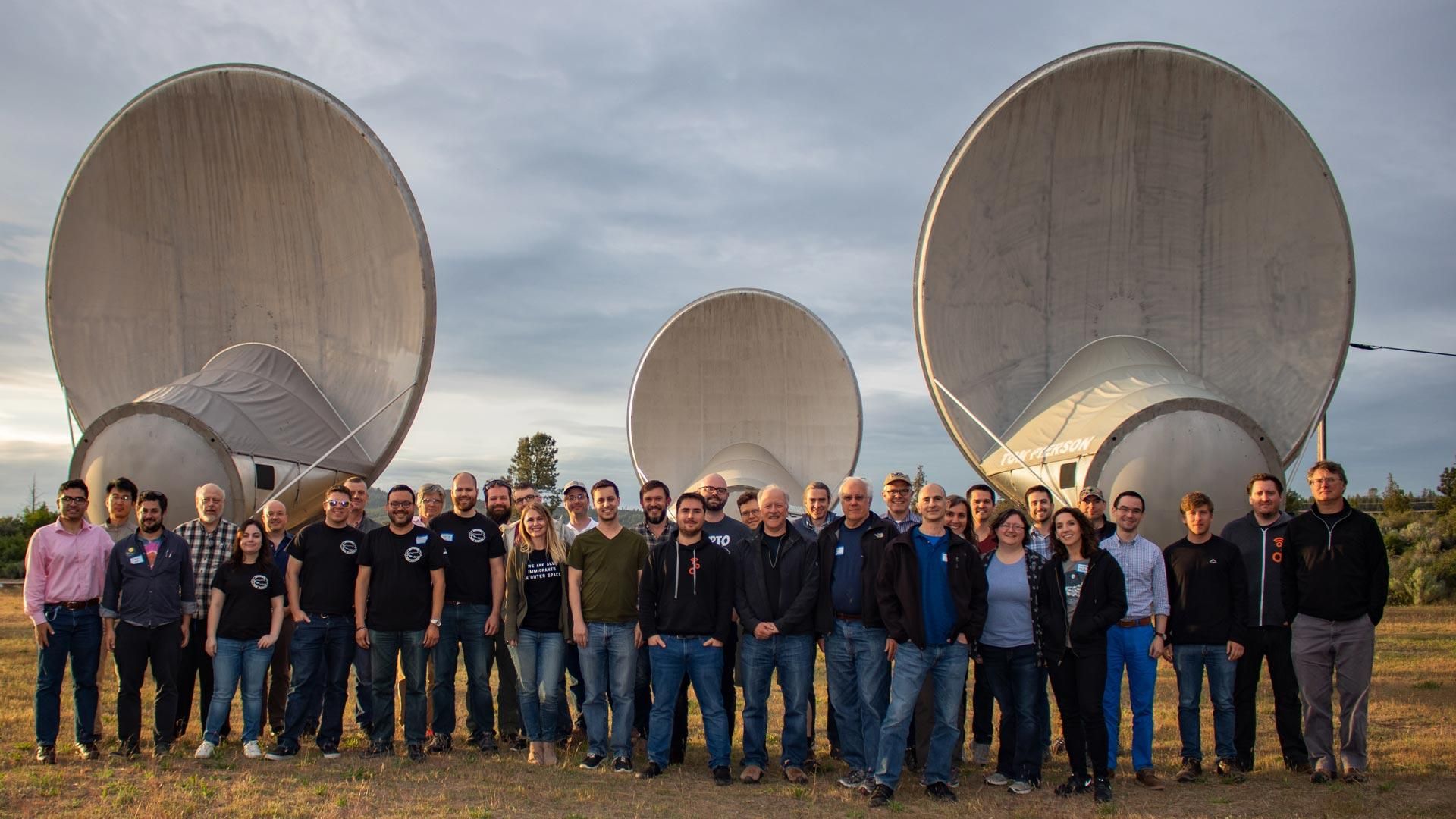
In September 2020, the SETI Institute established a collaboration with GNU Radio, a group of more than 150 programmers who voluntarily develop open-source software for a wide range of radio applications.
Sounds nice, but what does it mean? What benefit could such software offer to those trying to snag a signal from extraterrestrials?
The short answer is that GNU technology could revolutionize the development of receiving equipment for SETI (and for radio astronomy in general.) It promises to speed the design of new receivers, and to allow scientists to quickly change how data are analyzed and displayed.
To appreciate the problem GNU radio is hoping to solve, all that’s necessary is to visit any radio observatory (including the SETI Institute’s own Allen Telescope Array.) One of the inevitable hallmarks of these sites has been the collection of relay racks in the observing room – racks that are stuffed with custom electronics. Their job – aside from warming the room and distracting the observers with flashing lights – is to ingest the signals from the antenna(s) and convert them into a form that’s useful for whatever research is being done.
In fact, most of their functionality would be quite similar to the electronics you could find in just about any consumer radio from the past. Some circuits extract signals in a desired band of frequencies, others boost the signal strength. Additional electronics do specialized tasks such as correlating the outputs of the antennas to make a “radio picture” of the sky. There’s also the task of splitting up the incoming signal into frequency channels, from a dozen to hundreds of millions.
Much of this is analogous to what happens in your car radio – except for those last few steps. There’s little need for your Maserati’s dashboard radio to split up the amplified signal. It just processes one channel and sends it to a loudspeaker to keep the driver from becoming bored. But the other steps – extracting a particular frequency band and amplification – are functions you’ll find in any bit of receiving kit.
Until recently, such tasks have been dealt with by dedicated circuitry – circuitry implemented with components such as vacuum tubes, transistors, resistors, capacitors, coils, transformers, and many other items on display in a Radio Shack catalog. And every radio observatory has had its own custom hardware, its own home-brew electronics. You might liken this to the early days of the automobile, when each one was individually crafted.
However, as Derek Kozel, the leader of the GNU Radio enterprise, notes: “building bespoke hardware is tremendously expensive.” And it clearly involves a lot of redundant effort, as each observatory designs and constructs its own circuitry for amplification, frequency splitting, or signal extraction. It’s a case of re-inventing the wheel every time a radio telescope goes on the air or changes its strategy.
Given the scarcity of research dollars, this is clearly a problem pleading for a solution. And that solution is known as “software defined radio,” or SDR. Today’s digital devices are fast enough that the signal processing done by analog circuits can be replaced by simply manipulating numbers in a computer. SDR can accomplish nearly all the tasks required for astronomical signal processing, once the analog signals coming from the antennas are converted into a stream of numbers, using a fast analog-to-digital converter. The resulting, unending torrent of data (many billions of numbers per second) is then fed into the maw of a warp-speed computer, and then software routines emulate the functions of old-fashioned circuitry.
SDR is the future of radio, although it’s actually here now. For example, your cell phone implements its radio functions with software, not hardware.
GNU Radio makes routines for SDR and offers them for public use, all without charge. This means that a software engineer has tools to quickly design and implement a new or improved receiving system at a radio observatory.
And of course, once your receiver is an SDR machine, changing the observing frequency or the channel width, or anything else you might wish to do for a SETI observation merely requires changing some program parameters. It could be as easy as changing fonts in Word.
As Kozel notes, buying a computer these days that’s supple enough to keep up with the data stream from a radio telescope is both possible and inexpensive. GPU’s, or Graphic Processing Units – the speedy silicon hearts of video games – are among the favorite machines for software defined radios. This type of system is being developed for use at the Allen Telescope Array.
Marc Andreessen, the tech guru who wrote the first widely used web browser, once remarked that “software is eating the world.” Perhaps that’s true in a metaphorical sense, and whether it’s good or bad could be debated. But by turning the capability of software to the task of SETI, GNU software may help in the quest to find signals from another world transmitted by our cosmic peers.
-Seth Shostak, updated: July 2021.


